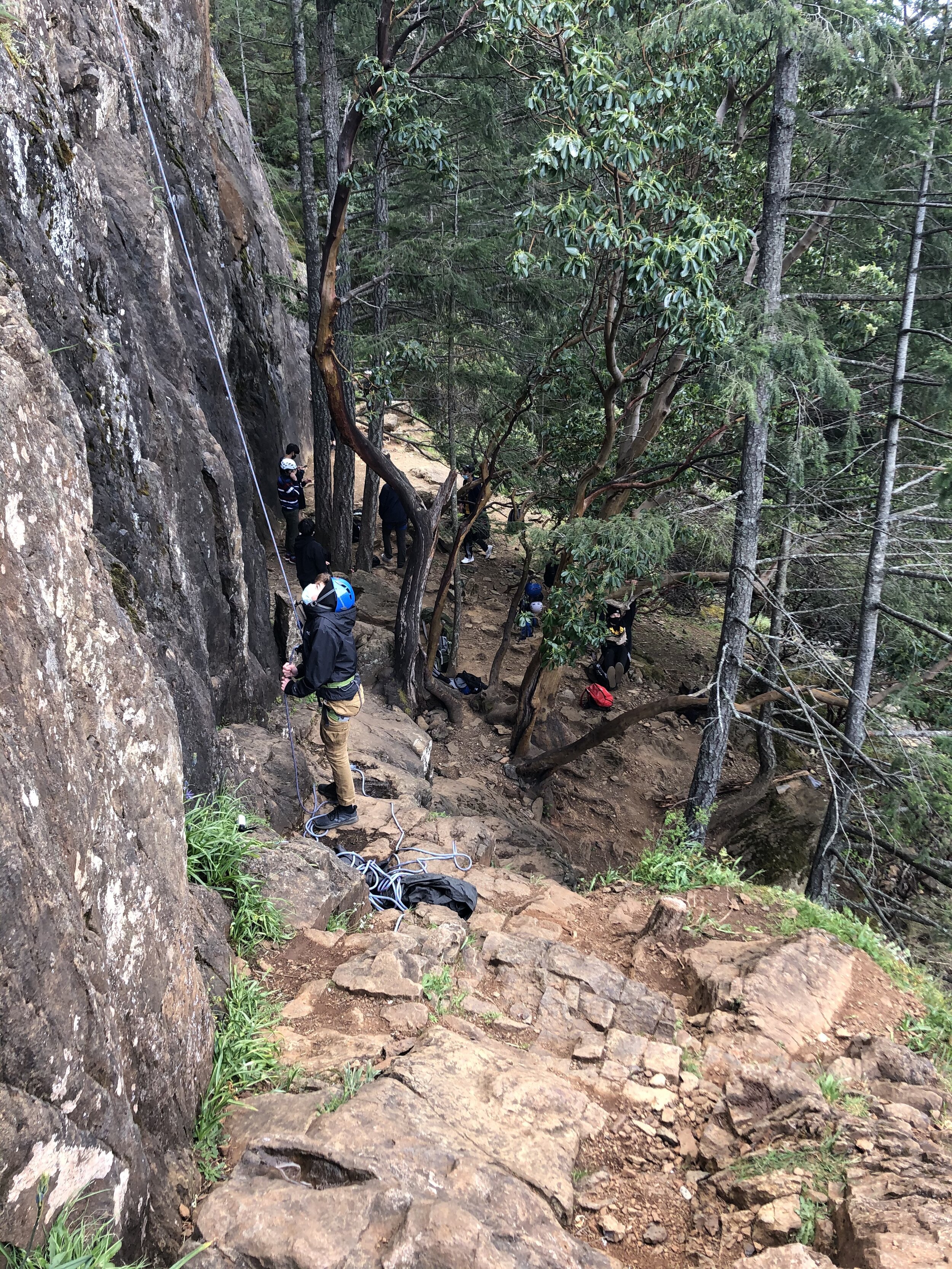Student First Name
*
Student Last Name
*
Day or Boarding Student
*
Swimming Ability
*
Please indicate which of the following best matches the swimming ability of your child
Allergies
*
Is your child allergic to any food, medication or other things (bees, wasps, peanuts, treenuts, penicillin...)
If yes, please describe what they are allergic to, the usual reaction, and the treatment
Dietary Restrictions
*
Do they require a special diet? (vegan, vegetarian, no pork...)
If yes, please explain
Medical Conditions
*
Does your child have any medical conditions that could affect their participation in the activity. (Examples: Dislocated shoulder 6 weeks ago, depression/anxiety, recently switched medication, Heart Condition...)
If yes, please describe the medical condition, treatment, and any details that the guides should know
General Outdoor Trip Risks and Hazards
*
Statistics from the outdoor industry indicate that on average 6% of outdoor program participants are injured during trips and 5% of participants become ill. About ½ of those injuries/illnesses can be treated in the field and the other ½ will require evacuation.
Minor injuries/illnesses occur frequently (on every trip). Typical examples include bumps, bruises, seasonal allergies, minor blisters, scratches and sunburns. These types of injuries are generally treated in the field and do not require additional medical treatment after the trip.
We also see a range of more significant injuries/illnesses although less frequently (every couple of trips). Examples include major blisters, burns from cooking/stove use, flu, allergic reactions, sprained ankles/knees, heat or cold injuries, concussions, cuts requiring stitches and dislocations. In most cases, these students are evacuated from the trip and require additional medical treatment when they get home.
Listed below are the hazards and risks associated with outdoor programs in general. In each case, we have included measures taken to reduce the frequency and severity of an event.
ALLERGIES/INJURIES/ILLNESS: Guide First Aid certification. First Aid kit with lead guide/group. Medical forms reviewed prior to trip. Emergency communication procedures in place to contact EMS if needed. Prior to trip, parents asked about medical conditions, allergies and dietary preferences.
ANIMALS: (bears, cougars, wolves, rodents, insects) No food in tents. Explanation about animal avoidance and what to do in the event of an encounter with specific animals of concern.
COOKING/STOVE USE: In the event that a stove is used on this trip, students will be provided with stove use lesson prior to operating stoves. An adult will oversee all stove use (on-site supervision).
DARKNESS: If applicable to this trip, limited activity will take place in darkness to avoid injuries. Students required to have a headlamp.
DROWNING: Adherence to SMUS Swimming policies and procedures. Supervision by guides/instructors while on and near the water. Explanation of water hazard and boundaries if needed.
DRUGS/ALCOHOL: Students made aware that school rules apply and that the safety implications are significant in such a trip. Use of Drugs and Alcohol strictly prohibited and will result in immediate removal from the trip.
EQUIPMENT FAILURE: Pre-trip equipment checks. Guides asked to report defective or damaged equipment to facilitate repair or replacement.
FATIGUE: Proper hydration and nutrition throughout trip. Planned breaks during strenuous activities. Regular checks by the guides.
FIRES: At the discretion of the guides/instructors and only in areas where fires are permitted. Supervision by adults.
FOOT INJURIES: Students required to wear footwear that is appropriate for the activity taking place and the location.
HORSEPLAY: Discussion with students about the complications of injuries in remote areas.
HOT, COLD and FOUL WEATHER: Guides aware of heat and cold related illnesses/injuries. Pre-trip equipment checks. Proper hydration and nutrition during trip. Selection of activities, activity areas and equipment to avoid weather related injuries. Review of long-term forecast prior to trip. Alternate plans to accommodate inclement weather.
LOST STUDENT: Pre-trip discussion about what to do in the event of a lost student.
TRANSPORTATION: Some students will be travelling with their parent/guardian. Other students will travel in a school bus or a school van with a certified driver. These drivers must have a license valid for the vehicle being driven and have had their driving abstracts approved by the school.
*
Parent/Guardian Name
*
Parent/Guardian Acknowledgement of Risk
*
As parent or guardian of the student, and having reviewed the material provided by SMUS about the activity, I hereby:
a) Consent to the student participating in the activity.
b) Recognize and understand the inherent risks associated with the activity including but not limited to the hazards of vehicle travel, wilderness travel, water travel, accident/illness in places without nearby medical facilities, weather and other circumstances beyond the control of St. Michaels University School employees, related parties and agents.
c) Authorize the activity leaders to consent to medical treatment for the student by any qualified medical practitioner as may be necessary in the event of an emergency.
d) Understand the specific risks associated with the activities, including but not limited to: adverse weather conditions, winds, waves, wildlife, the use of paddling/climbing/ski/snowboard/hiking equipment, swimming, slippery trails, the use of camp stoves and campfires, and travel within and outside the activity area. Consequences of these risks may result in physical or emotional injury, paralysis, drowning, death or damage to property or third parties.
